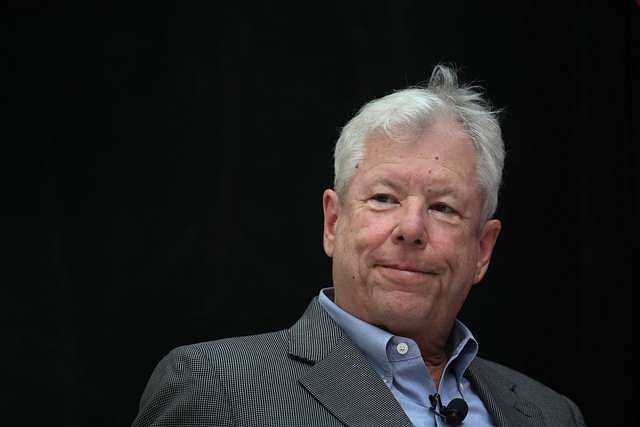
Behavioural Economics: Not A Magic Wand, But Can Free Policy Makers From Theory-Induced Blindness
Using behaviouralism, it should be possible to evaluate better, costs and benefits of social sector projects in education, healthcare, water, sanitation.
Behaviouralism may not be a magic wand, but it could at least free policy makers from ‘theory-induced blindness’.
These are not the best of times for classical economics, which is under fire for failing to predict crises or to even help understand the modern economy. Enter behavioural economics, which attempts to explain how the world works and not how it should. In this shift of perspective, it questions a fundamental assumption of classical economics - the rational man - and its corollaries in the form of utility maximising or self-interested behaviour. Behaviouralism has been derided for being anecdotal and not rigorous enough, but by bagging this year’s Nobel for the third time, has demonstrated its growing popularity.
A possible cause is the policy prescriptions that it has spawned; the 2015 world development report of the World Bank was devoted to behavioural approaches to policy. Many countries have taken to it (UK even setting up a Nudge unit at the Cabinet level) with a fair degree of success.
The discovery of irrationality in economic behaviour is not new; classical economists were aware but considered irrationality as self-cancelling ‘noise’. Behaviouralists, on the other hand, did not consider it as random and inexplicable, but as something fundamental and systematic. This is where it became useful for influencing behaviour or nudging as Prof Thaler calls it. While Prof Thaler’s work has many interesting facets, two specific forms of irrationality, conceptualised under “mental accounting” and “endowment effect”, stand out.
Mental accounting concerns the attitudes towards money - the rational response is that all cash is fungible, but Thaler says people have ‘mental accounts relating to different expenditures, resulting in spending patterns that belie fungibility. For instance, by “labelling” cash transfers wherein recipients get money that can be used for anything but are told it is meant for a specific purpose, it is possible to trigger their mental accounting and lead to funds being used for the intended purpose. Better understanding of individuals’ internal control systems can help predict how spending, saving and other variables will be affected.
The endowment effect is even more counter intuitive. Simply put, if giving up an owned object is perceived as a loss, then loss-averse individuals will behave as though that is more highly valued than similar objects they do not own. The rational response would have been indifference. This is encapsulated in the principles of “willingness to accept” (WTA) and “willingness to pay (WTP) with the stated rule being WTA tends to have higher values (being objects owned) than WTP (objects not owned). The spread between WTA and WTP is apparently large for public goods, raising the question of the appropriate number to be used for valuing such goods.
Much of social infrastructure (health, education, roads, water), projects tend to use WTP surveys to set prices or tariffs and the revelation that WTP is often grossly understated, relative to true values, is an eye-opener. The endowment effect also helps explain why businesses don’t always act rationally (like hiking rates when demand surges, as in the case of cab companies) if it is likely to cause outrage since it entails taking away something customers have (endowment).
Can understanding ‘irrationality’ really help achieve better policy outcomes? There have been successes, if UK’s performance is something to go by. The UK Nudge unit is now a separate company, funded by private investors and government. Reducing fraud and better tax compliance is stated to be their top success, claiming to have nudged forward payment of £30 million a year in income tax. In the US, changing the default on workplace pensions from an opt-in to an opt-out led to millions more savers. The US government now has a behavioural and social sciences team, helping administer an array of programmes across health, insurance, tax and education.
The beauty lies in its simplicity - small changes in processes or design could lead to large effects. For instance, poor families in the United States receive food stamps that enable them to buy food, at the beginning of the month. This system, designed for administrative convenience, resulted in over spending in the early part, leaving little to spend later in the month. Switching from a single monthly installment to fortnightly or weekly would dramatically reduce the need for recipients to exert self-control, another key concept in behavioural economics. India probably offers the most fertile testing ground for finding solutions to avoidable self-control problems.
By simply changing the timing of flows, for example in cash transfers, or dovetailing them with agricultural seasons could produce significant improvement in outcomes. Some studies have shown that financial distress in farming is experienced usually before harvest season, leading to increased borrowing. If farmers were able to spend more judiciously in the post-harvest season or have access to committed savings, it could solve the self-control problem. Using behaviouralism, it should be possible to evaluate better, costs and benefits of social sector projects in education, healthcare, water, sanitation. Behaviouralism may not be a magic wand, but it could at least free policy makers from ‘theory-induced blindness’.